Properly supply enough electricity to keep your systems running for longer periods of time.
Getting the right power supply for your home server system and its other connected components.

Grid power supply, solar power supply and a combination of both types of power supply.
THE GRID POWER SUPPLY

The Grid system of electricity essentially provides a structured framework for organization and efficient distribution. In the context of electricity, it’s a network that delivers power from generators to consumers.
FUNCTION:
- Power Generation: Electricity is produced at power plants (coal, nuclear, etc.).
- Transmission: High-voltage lines carry power from power plants to substations.
- Substations: These facilities step down the voltage for safer distribution.
- Distribution: Lower voltage lines deliver electricity to homes and businesses.
- Function: The grid ensures a reliable and efficient flow of electricity to meet demand.
SOLAR POWER SUPPLY
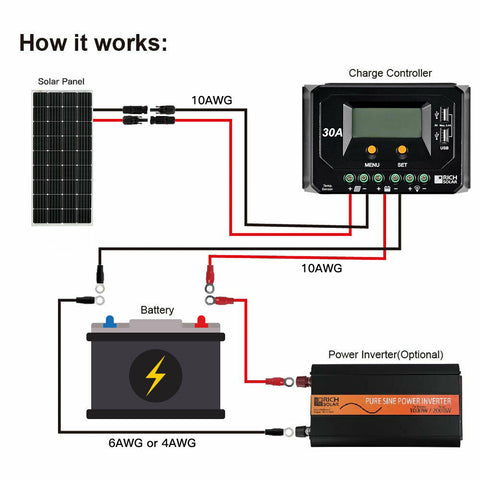
Solar energy works by converting sunlight into usable electricity or heat. This is primarily achieved through photovoltaic (PV) cells, which are found in solar panels. When sunlight hits these cells, it generates an electrical charge, creating a flow of electrons – electricity – that can be used to power homes, businesses, and other applications.
BREAKDOWN OF THE PROCESS:
- Solar panels are made up of numerous individual photovoltaic cells.
- These cells are typically made from semiconductor materials, like silicon.
- When photons (particles of light) from the sun strike the semiconductor material in a cell, they can be absorbed, causing electrons to be freed from their atoms.
- This freed electron creates an electrical charge.
- The semiconductor material is designed with a built-in electric field, which encourages these freed electrons to flow in a specific direction.
- This flow of electrons constitutes an electric current.
- This process is known as the photovoltaic effect.
- The electricity generated by solar panels is typically in the form of direct current (DC).
- However, most household appliances and electrical grids use alternating current (AC).
- An inverter is used to convert the DC electricity from the solar panels into AC electricity.
TYPES OF BATTERIES COMMONLY USED IN HARNESSING AND SUPPLYING POWER TO ELECTRICAL SYSTEMS

12V LEAD ACID BATTERY
Lead-acid batteries are the most basic 12V battery type. They’re made of lead plates suspended in a sulfuric acid solution, which creates a chemical reaction that allows for energy to be stored.

There are four main types of lead-acid batteries
- Lead-acid/wet-cell/flooded. The most commonly used batteries used in vehicles are lead-acid batteries.
- Enhanced Flooded Batteries (EFB) …
- Absorbent Glass Mat (AGM) …
- Gel batteries.
SOLAR PANEL CHARGE CONTROLLER & BATTERY REGULATOR
In order to properly recharge and discharge your battery safely you will need a PWM or MPPT controller to monitor the voltage levels at all times. A generic model of such a charge controller can be seen below.
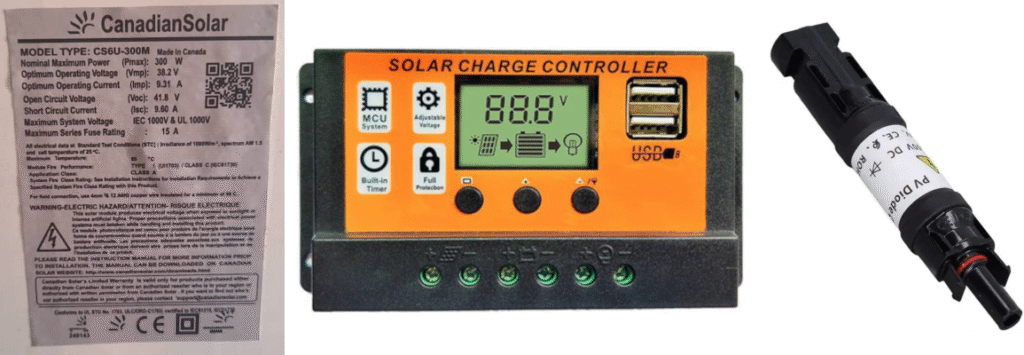
CONTROLLER DESCRIPTION:
- Advanced maximum power point tracking (MPPT/PWM) technology
- Large screen LCD display, charge and discharge current display, cumulative power generation and discharge power query, temperature display, light control + delay control; adjustable charge and discharge parameters, with power-off memory and other functions.
- Dual USB output, the maximum current is 2.5A. Equipped with all necessary protection devices, the control parameters of the system are adjustable, easy to set up and operate. Built-in overheating, overcurrent, short circuit, open circuit protection, fault elimination, controller automatic recovery. Two-way MOS tube anti-backflow circuit, high-power charging mode, ultra-low heat.
- Built-in short circuit protection, open circuit protection, reverse connection protection, overload protection. Reverse current protection, low calorific value, with self-recovery function, will not damage the controller.
- Real-time display of temperature, charging current and discharge current. Current autofocus MPPT tracking charging, high charging efficiency, charging process does not stop detection, two-way focus tracking.
- Name: LCD screen solar controller
- Voltage: DC 12V / 24V
- Display: LCD screen
- Self-consumption: <10MA
- Overcharge protection: 14.4V / 28.8V
- Overcharge Float charge: 13.7V / 27.4V
- Charge recovery voltage: 12.6V / 25.2V
- Over discharge protection: 10.7V / 21.4V
- Over discharge recovery: 12.6V / 25.2V
- Dual USB output: 5V / 2A (charge mobile phone, iPad, etc.)
- Working temperature: -35 ℃ -60 ℃
- 12V fits 18V solar panel, 24V fits 36V solar panel
- 12.0 volt lead acid battery corresponding
- The float voltage is set to: 13.6
- The recovery discharge voltage is set to: 12.6
- The discharge cut-off voltage is set to: 10.7
- 12.8 volt lithium iron phosphate battery corresponding
- The float voltage is set to: 14.6
- The recovery discharge voltage is set to: 13.6
- The discharge cut-off voltage is set to: 11.0
- 11.1 volt lithium battery corresponding
- The float voltage is set to: 12.6
- The recovery discharge voltage is set to: 11.6
- The discharge cut-off voltage is set to: 9.6
- The minute is adjustable when the output is turned off, which is more convenient (there is no adjustment when the market is only available).
A DIAGRAM ON HOW TO CONNECT TO SOLAR PANELS TOGETHER TO OUTPUT, A HIGHER VOLTAGE AND AMPERE TO PROVIDE MAXIMUM AND STABLE POWER TO YOUR SYSTEMS AND COMPONENTS AT ALL TIMES OF THE DAY
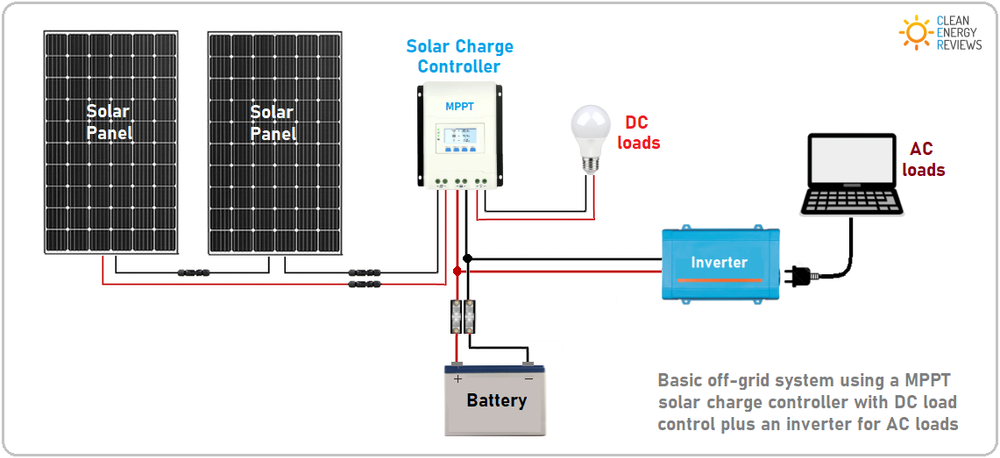
Take special notice of the the positive and negative wires coming from both solar panels and going into the solar charge controller. You would notice that the wires are connected in a peculiar way, you need to be certain that you follow this exact set up if you are going to be using two or more solar panels at the same time with one charge controller.
12V Sealed Lead Acid Battery Voltage Chart
Below is a diagram of the charge and discharge states of a 12V sealed lead acid battery.
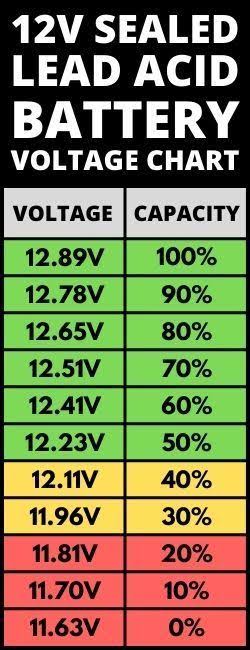
Acid Battery Voltage Chart
Everybody knows it is best practice to not discharge a Sealed Lead Acid Battery below 50% of its total capacity. What this means is if we are to use a 12V Sealed Lead Acid Battery in our project we should be careful to make sure the systems drawing power from the battery are properly shut off once the battery’s voltage reduces to 11.5V. If you keep running down the battery past this particular level, the battery will not last more than five complete recharge cycles. Unlike Lithium chemistry batteries, lead acid batteries do not hold up well during deep discharge.
12v Automatic Voltage Cutoff Switch
This is an under voltage switch module used to turn off the power of resistive load in the event of the voltage dropping below a definite value. When the voltage rises back, the module will automatically turn on load again. The module has a low power consumption of less than 10mA.Default under voltage protection value is about 10.5V, and can be adjusted by turning a Potentiometer, clockwise to increase and anticlockwise to reduce. If the load restores immediately after it is turned off, you can add a capacitor(>25V), and the capacitance depends on your load.
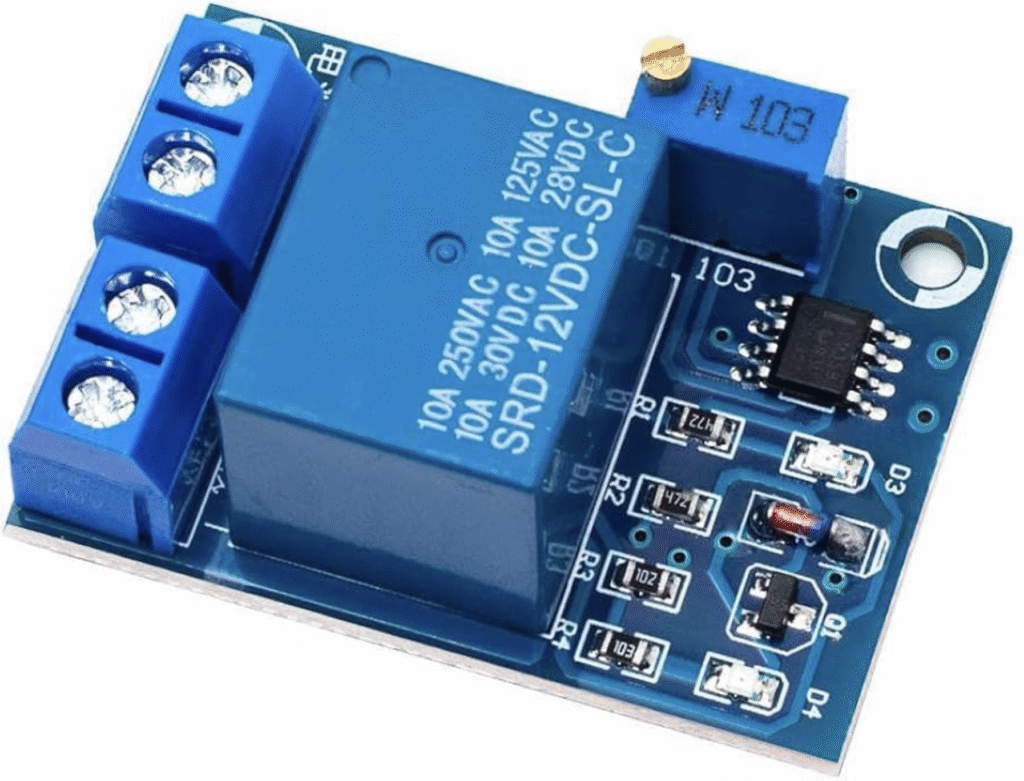
SPECIFICATIONS:
- Input Voltage: 12V DC.
- Power Consumption: < 10mA.
- DC Load: 12V DC, 10A(resistive load).
- Size: 402919mm/1.571.140.74″ />.
- Mounting Size: 34mm/1.33″, 3mm/0.11″(dia.)
3.7V LITHIUM POLYMER BATTERY
A 3.7V LiPo (Lithium Polymer) battery is a rechargeable battery commonly used in portable electronic devices. It offers a good balance of power, size, and weight, making it suitable for various applications like smartphones, drones, and other small electronics. These batteries typically range in capacity from a few hundred mAh to several thousand mAh, and they may include built-in protection circuitry to prevent overcharging, over-discharging, and short circuits.

CHARACTERISTICS:
- The nominal voltage is 3.7V, but the voltage can range from 4.2V when fully charged to around 3.0V when depleted.
- Measured in milliampere-hours (mAh), the capacity indicates how long the battery can power a device. Common capacities range from a few hundred mAh to several thousand mAh.
- LiPo batteries often include a PCM (Protection Circuit Module) to prevent overcharging (exceeding 4.2V), over-discharging (dropping below 3.0V), and short circuits.
- They often come with a JST connector (e.g., JST-PH) for easy connection to devices.
- LiPo batteries are known for their slim profile and low weight, making them ideal for portable devices.
- They can store a significant amount of energy in a small space.
- Compared to some other battery types, LiPo batteries maintain a relatively stable voltage during discharge.
- They can deliver high currents, making them suitable for devices that require a lot of power.
THINGS TO CONSIDER:
- Always use a compatible LiPo charger designed for constant voltage and current charging.
- Avoid damaging the battery (puncturing, bending, etc.) as this can be a fire hazard.
- For long-term storage, it’s best to store LiPo batteries at a partial charge (around 3.8V per cell).
- LiPo batteries have a limited lifespan and may need to be replaced after a certain number of charge cycles or if they show signs of damage (e.g., puffing or swelling)
3.7V LITHIUM BATTERY PROTECTION BOARD
THERE ARE VARIOUS TYPES OF BATTERY MANAGEMENT BOARD FOR A 3.7 V LIPO BATTERY. BELOW ARE A FEW COMMON TYPES WIDELY USED IN IOT APPLICATIONS.
CN3791 MPPT SOLAR CHARGING BOARD MODULE
This CN3791 MPPT solar panel solar charger boasts high efficiency, ensuring your devices are charged quickly and effectively. Ideal for outdoor use. Designed to charge lithium batteries between 3.7V and 4.2V, this module is versatile and can be used with a wide range of battery types. Its compact design makes it easy to carry and store, making it an ideal choice for those on the go.

FEATURES:
- Input voltage: Select the corresponding module (6/9V/12V) based on the nominal voltage of the solar panel. Output voltage: nominal 3.7, full stop voltage 4.2V.
- Lithium ion battery working environment temperature: -40 ° C~+85 ° C
- When the current output capability of the input power supply decreases, the internal circuit of CN3791 can automatically track the maximum power point of the solar panel.
- The charging current can reach 2A f(6V Solar Panel type) and 4A (12V Solar Panel type)
- PWM switching frequency: 300KHz
- Constant voltage charging voltage: 4.2V ÷ 1
- The constant current charging current is set by an external resistor.
- The trickle charging product for deeply discharged batteries has an automatic recharging function. When the soft start function is charging, the CH light (red light) will stay on and the OK light (blue light) will go off; When fully charged, the CH light will flash and the OK light will remain on.
3.7V LITHIUM ION BATTERY MANAGEMENT SYSTEM CIRCUIT BOARD
The protection plate is to be used in combination with the battery. This is a single Cell / 1S 3.7V 3.0A Battery Management System / BMS Over Voltage, Over Current, Short Circuit Protection Module for Lithium ION or Lithium Polymer (LiPO) Batteries.

FEATURES:
- Over charge voltage: 4.25±0.05V
- Over charge release voltage:4.23±0.05V
- Over discharge voltage:2.54±0.1V
- Maximal continuous charging current: 2A
- Maximal continuous Discharging current: 2A
- Over current protection: 3A
PINOUTS:
- B+:connect with power positive
- B-:connect with power negative
- P+:connect with charging/discharging port positive(charging port/discharging port common used)
- P-:connect with charging/discharging port negative(charging port/discharging port common used)
3.7V LIPO BATTERY VOLTAGE CHART FOR 1S – 6S BATTERY PACKS
Blue we have devoted chat for the 3.7V LiPo battery. Voltage range is from 1S 3.7V – 6S 22.2V.

Take note of the voltage range on the single cell chart. It is fully charged at the voltage of 4.2V and it is fully discharged at the voltage of 3.2V. It’s nominal voltage is 3.7V. You are not to discharge this batteries below 3V for extended periods of time or you might risk damaging the batteries in the process.
3.2V LiFePO4 (LITHIUM IRON PHOSPHATE) BATTERY
A 3.2V LiFePO4 (Lithium Iron Phosphate) battery is a type of rechargeable battery known for its safety, long lifespan, and efficiency. It’s a variant of the lithium-ion battery, specifically using LiFePO4 as its cathode material. These batteries are commonly used in electric vehicles, electric bikes, energy storage systems, and various other applications where long cycle life and reliability are crucial.
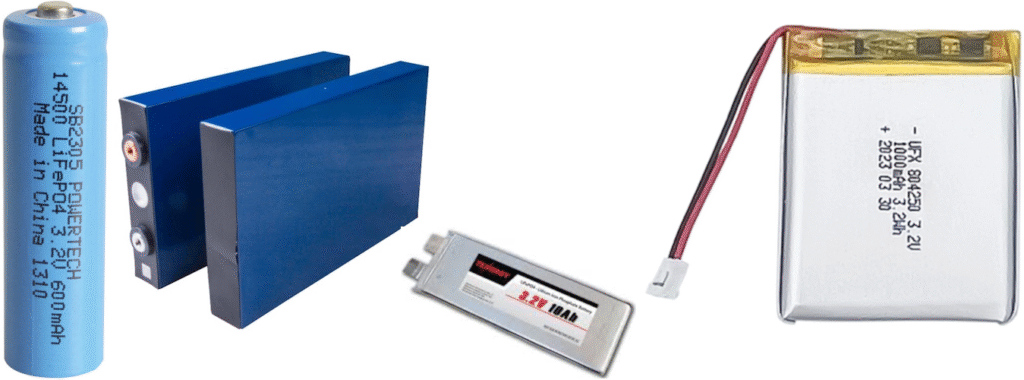
FEATURES:
- Voltage: Nominal voltage of 3.2V per cell.
- Chemistry: LiFePO4 (Lithium Iron Phosphate).
- Capacity: Available in various capacities, such as 6Ah, 7.2Ah, etc., depending on the specific cell.
- Cycle Life: Can withstand a large number of charge and discharge cycles, often 2000 or more.
- Safety: Generally considered safer than other lithium-ion chemistries due to the stability of the LiFePO4 material.
- Temperature Range: Operates within a wide temperature range for both charging and discharging.
- Applications: Widely used in electric vehicles, electric bikes, energy storage systems, solar power systems, and other applications where long-lasting and reliable power is needed.
- Construction: Can be found in various form factors, including cylindrical cells (like the 32700) and prismatic cells.
- Longer Lifespan: Resistant to degradation, offering a longer operational life compared to other lithium-ion batteries.
- Improved Safety: Less prone to thermal runaway and other safety issues.
- Stable Performance: Maintains consistent voltage and capacity throughout its lifespan.
- Environmentally Friendly: Uses less harmful materials compared to some other battery chemistries.
3.2V LITHIUM IRON PHOSPHATE BATTERY MANAGEMENT & PROTECTION PLATE
WELL, RECHARGING AND DISCHARGING A LITHIUM BATTERY. IT IS BEST PRACTICE TO UTILIZE A PROPER BATTERY PROTECTION BOARD. SUCH A BOARD HAS SEEN BELOW HAS SOME IN BEAUTY SAFETY FUNCTIONS LIKE OVER CHARGE PROTECTION, OVER DISCHARGE PROTECTION, SHORT CIRCUIT PROTECTION, OVER CURRENT PROTECTION ALL FUNCTION TO ENSURE THE ABSOLUTE SAFETY AND RELIABILITY OF THE BATTERY PACK.
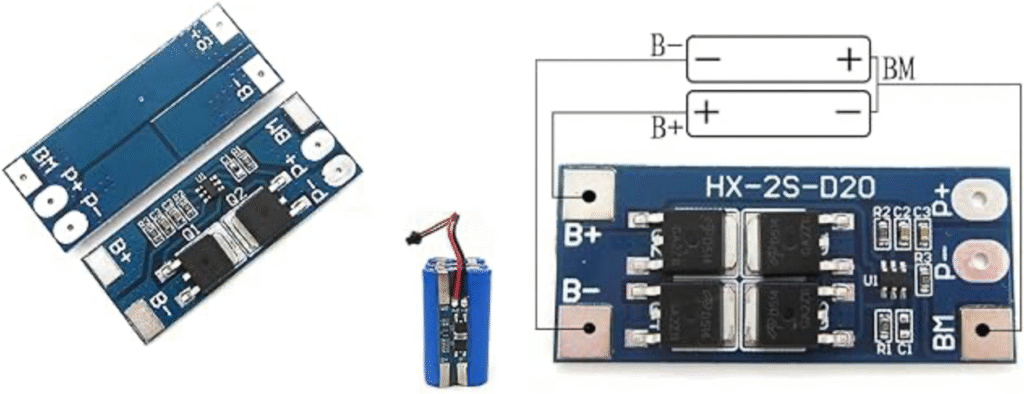
SPECIFICATIONS:
- Upper working current 10A
- Maximum instant current 12.5A
- Overcharge voltage range :3.75+ 0.05V
- Over discharge voltage range :2.1V÷0.05V
- Static current: less than 30uA
- Charging voltage :3.7V Short-circuit protection: can be protected, delay
- self-recovery
WIRING INSTRUCTIONS:
- B+ Connects to the positive terminal of the battery.
- B- Connect to the negative battery terminal. P+ indicates the positive terminal of the battery output and input
- P- is the battery output input negative terminal
3.2V LIFEPO4 BATTERY VOLTAGE CHART
BELOW WE CAN SEE THE TYPICAL VOLT RANGE FOR THE 3.2 V LIFEPO4 BATTERY. THE CHAT BELOW SHOWS VOLTAGE RATING FOR SINGLE SERIES BATTERIES ALL THE WAY UP TO 16 SERIES BATTERY PACKS.
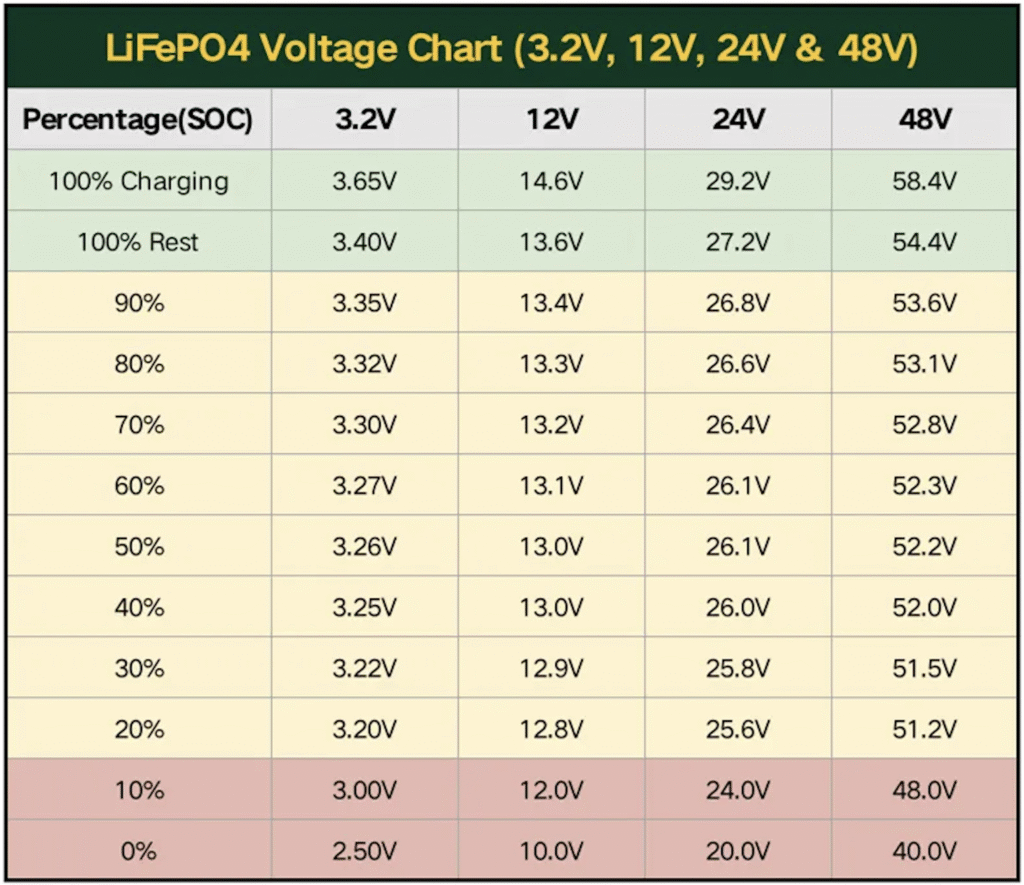
A single LiFePO4 battery is fully charged at 3.65V and fully discharged at 2.5V. It’s nominal voltage batteries is 3.4V and it’s safe cut off voltage is at 3V. Let the battery drain lower than 2.5 V reduces its lifespan so always be sure to keep an eye on its discharge curve and make sure you do not damage the battery by over discharging it.
LITHIUM-ION BUTTON/COIN CELL BATTERY
A CR2032 battery is a Non-Rechargeable, 3-volt lithium coin cell battery with a diameter of 20mm and a thickness of 3.2mm. It typically has a capacity of around 220mAh and is commonly used in various small electronic devices.
SPECIFICATIONS:
- Voltage: 3.0 Volts (nominal)
- Capacity: Around 220mAh (Milli-Ampere Hours)
- Chemistry: Lithium Manganese Dioxide (LiMnO2)
- Diameter: 20mm
- Thickness: 3.2mm
- Operating Temperature Range: -20°C to +60°C or -30°C to +85°C (depending on the manufacturer)
- Typical Weight: 2.8 to 3.0 grams
- Self-discharge: Less than 1% per year at room temperature
- Common Applications: Digital watches, car keys, memory backup, medical devices, and more
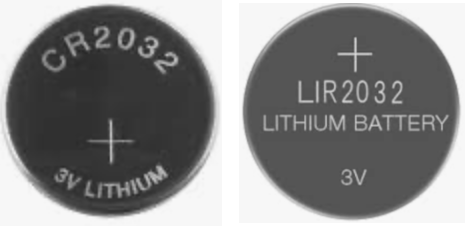
The LIR2032 is a Rechargeable lithium-ion button cell battery with a standard voltage of 3.6V and a typical capacity of 40-45mAh. It is commonly used in small electronic devices like watches, RTC modules, and sensors. The battery has a diameter of 20mm and a thickness of 3.2mm, and it weighs approximately 3 grams.
SPECIFICATIONS:
- Voltage: 3.6V
- Capacity: 40-45mAh
- Chemistry: Lithium-ion
- Diameter: 20mm
- Thickness: 3.2mm
- Weight: Approximately 3g
- Rechargeable: The LIR2032 is a rechargeable battery, unlike the non-rechargeable CR2032.
- Charging: The maximum charging voltage is 4.2V, and the recommended charging current is around 20mA.
- Applications: It is widely used in devices like watches, calculators, and other small electronic devices.
If you do not have the rechargeable LIR2032 Battery but you have a computer which isn’t in use or is broken, then you can take out the broken PC’s motherboard’s CMOS battery and use it to power the necessary device devices in your your projects. The CMOS batteries in computer motherboards are usually rechargeable.
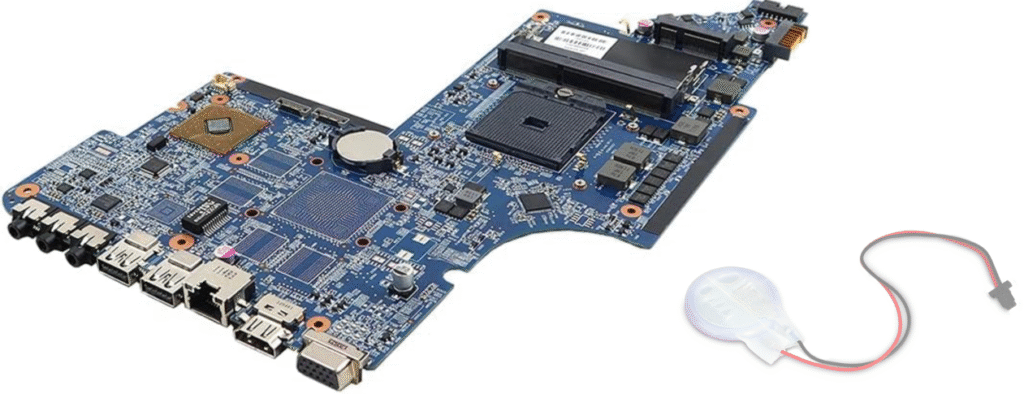
The CMOS battery is visible right at the center of the motherboard above.
SOLAR PANELS
Solar panels come in different sizes and varieties. Each size usually has a fixed voltage can It’s output and each size of solar panel has its ampere output rating. It is proper rule of thumb to use the right solar panel specified by the charge controller that we will be receiving current from the solar panel. All Solar charge controllers have a maximum voltage that can be fed into them without overloading or destroying its circuit. Below, we can see pictures of three different sizes of solar panels available in the market today. Each one of them has their advantages and disadvantages so it is best practice to research your power needs before going out to purchase either solar panels or batteries so as not to under power your system. A brief description of power rating of the solar panel is shown below as follows:
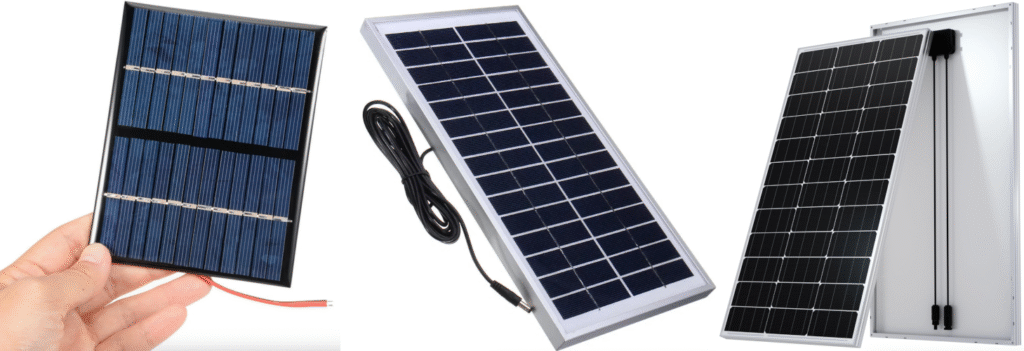
ON THE LEFT: A portable 5V – 6V solar panel that can output a total of not more than 1A. due to this panels, very portable and lightweight size. It is very, very useful for embedded and portable power solutions. With the solar charge control controller, this particular solar panel can recharge either one string of a 3.2V LifePo4 or 3.7V LiPo battery.
IN THE MIDDLE: This is a slightly bigger type of solar panel. This type of solar panel panels usually output in nominal voltage of between 12V – 18V and can supply between 6A to 10A of current. This size of solar panels are very very handy in recharging a typical 12V car battery with a suitable solar charge controller.
ON THE RIGHT: this type of solar panels are the large ones that are usually mounted on rooftops and racks outside or on top of the home. Due to the large size, the voltage root for this type of solar panels can range between 30V – 55V and have an Ampere written of between 9A – 15A. this type of solar panels are big enough to recharge batteries wired in series of up to 24V – 48V.
MB102 SOLDER LESS BREADBOARD POWER SUPPLY MODULE
THE MB102 POWER SUPPLY MODULE FEATURES A SOLDER LESS BREADBOARD DESIGN, ALLOWING FOR EASY AND QUICK ASSEMBLY AND DISASSEMBLY. THIS MAKES IT IDEAL FOR PROTOTYPING AND TESTING. WITH 3.3V, 5V, AND 9V POWER SUPPLY OPTIONS, THIS MODULE CAN CATER TO A WIDE RANGE OF ELECTRICAL NEEDS, MAKING IT A VERSATILE ADDITION TO YOUR ELECTRONICS TOOLKIT. DESIGNED FOR COMPUTER APPLICATION, THIS POWER SUPPLY MODULE IS PERFECT FOR INTEGRATED CIRCUITS, ENHANCING THE FUNCTIONALITY AND EFFICIENCY OF YOUR ELECTRONIC DEVICES.
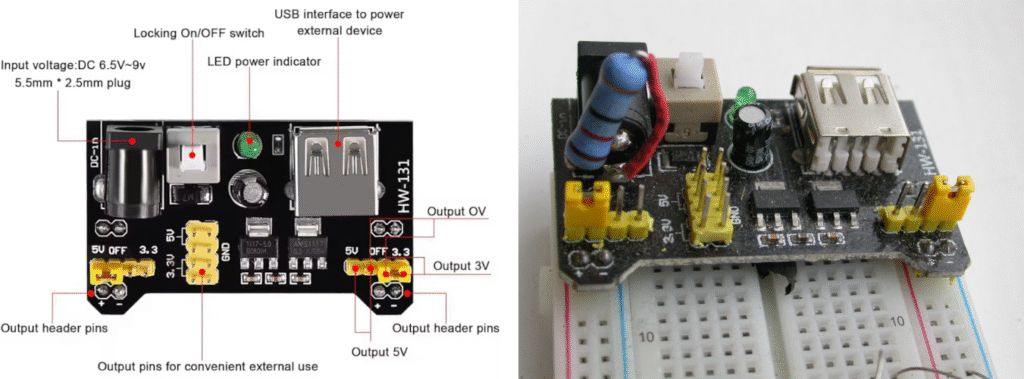
FEATURES:
- There is a green LED to indicate the presence of power, and an ON / OFF latching switch to control the power to the board.
- The input voltage through the barrel socket must be between 6.5 V and 12 V. Hence, if you wish to use it to its maximum capability you will need to remain in that range. This is a non-adjustable fixed power supply model, which is good enough for most applications.
- Maximum output current to be 700 mA. However, it is probably better to use much lower voltages and current to be on the safe side in case you make a mistake on your breadboard circuit.
- With 9V battery snap power cable T-type 5.5×2.1mm connector.
- How to use: This is a plug-in power supply and the headers below the board simply plug-in to the breadboard. Once plugged in, the voltage rails to both sides on the breadboard then provide power. You then use the yellow jumpers to select the voltage levels required. This is a dual output 3.3 V, 5 V regulated board and you can have either voltage on either rail on the breadboard, which is very useful.
SPECIFICATIONS
- Locking ON / OFF Switch
- LED Power Indicator
- Input Voltage: 6.5 V to 12 V (DC)
- Output Voltage: 3.3 V / 5 V DC
- Maximum Output Current: 700 mA
- Power Rails 0 V, 3.3 V, 5 V on Breadboard
- Two Groups of Header Pins
IMPORTANT WARNING:
This power module was not built to handle high voltages for long stretches of time. The voltage regulator tends to heat up/overheat if it is discharging voltages higher than 9V into any connected peripherals for extended periods of time. To mitigate the issue of devoted regulator, getting overheated easily on heavy use, you will need to make a little modification on the board itself. To make this modification you are to cut the input positive channel on the barrel plug and solder a high powered resistor in series to the input power of the board. This high voltage resistor will minimize the power going through the board and limit the voltage regulator from getting too hot to be overheated. A diagram of this modification already done can be seen in the picture above.
